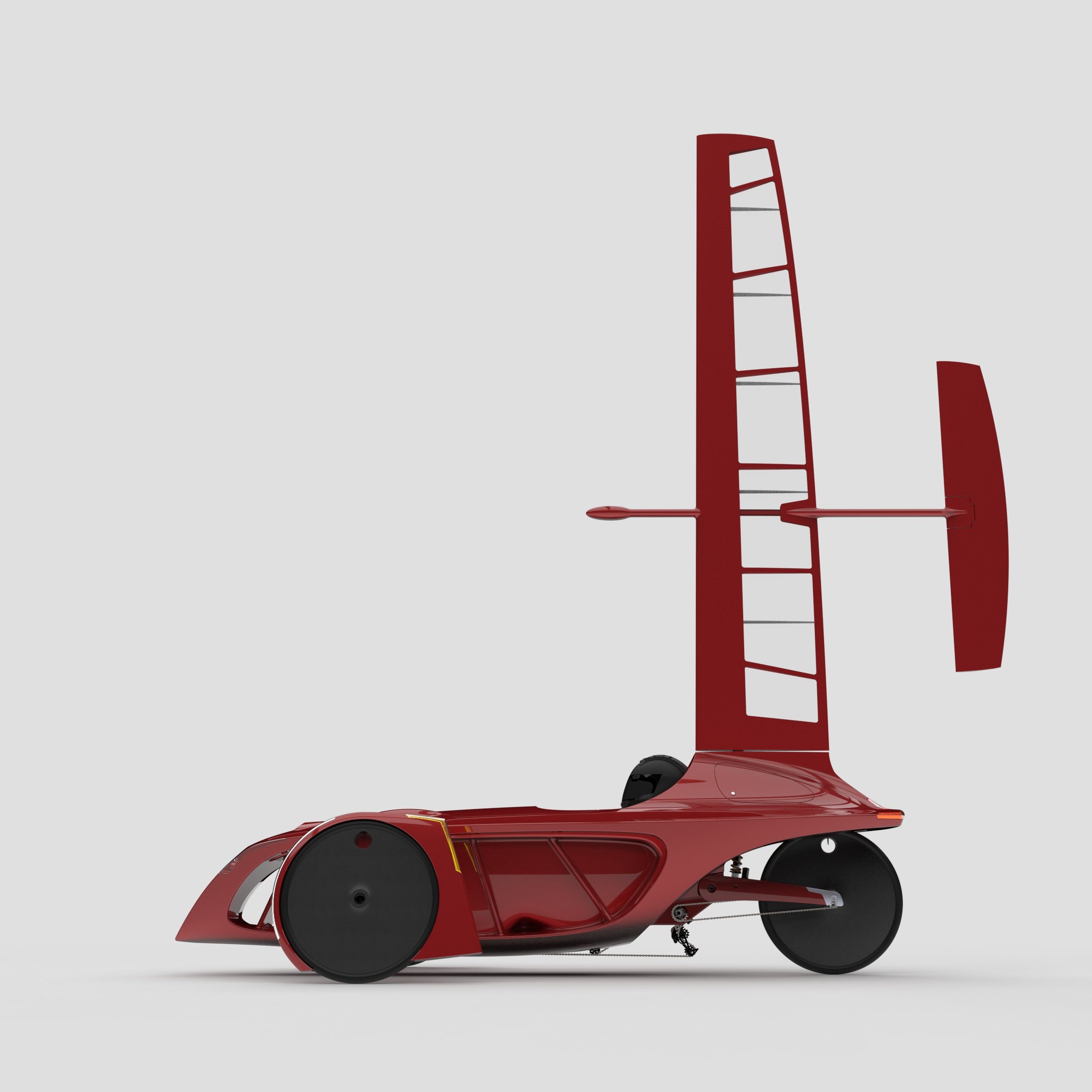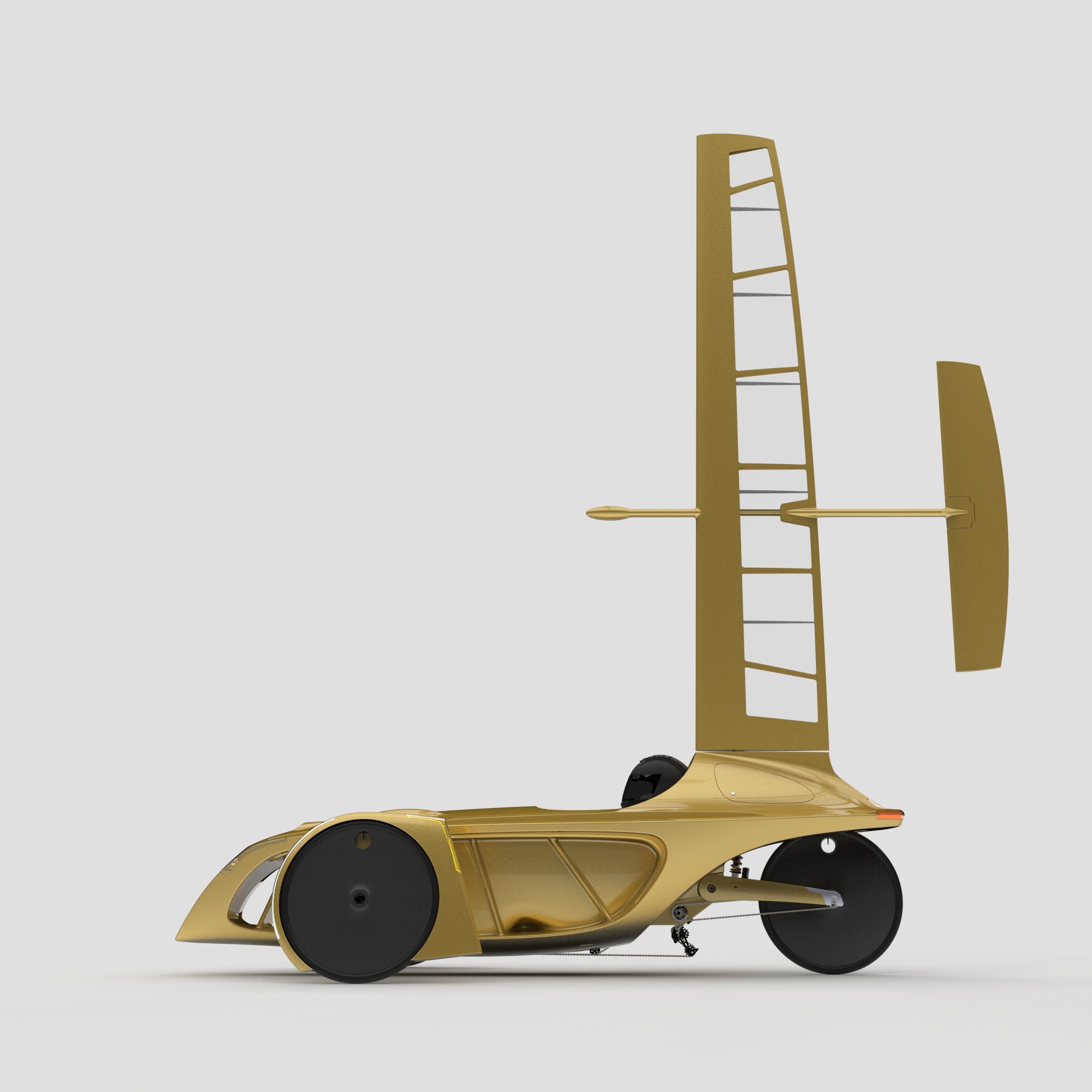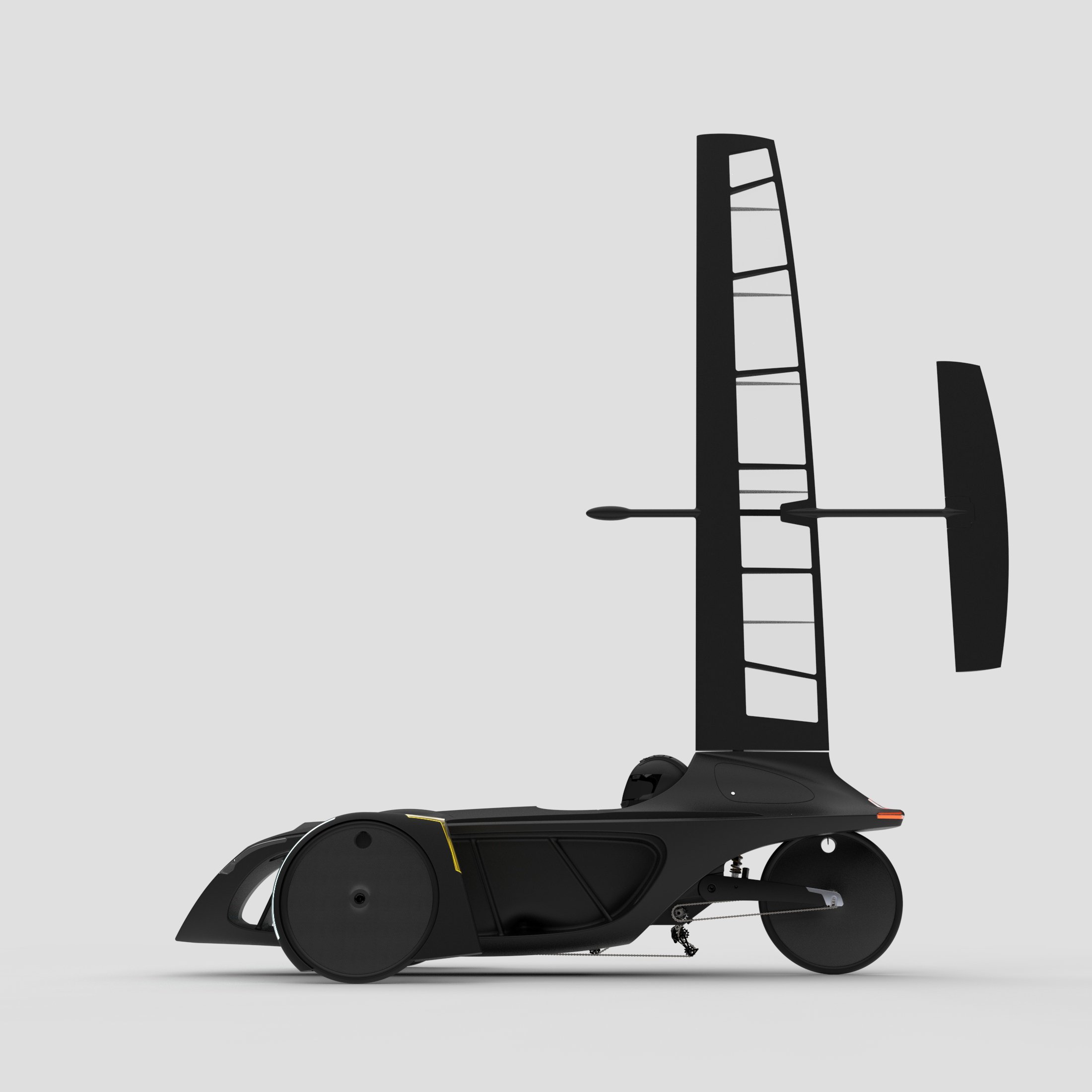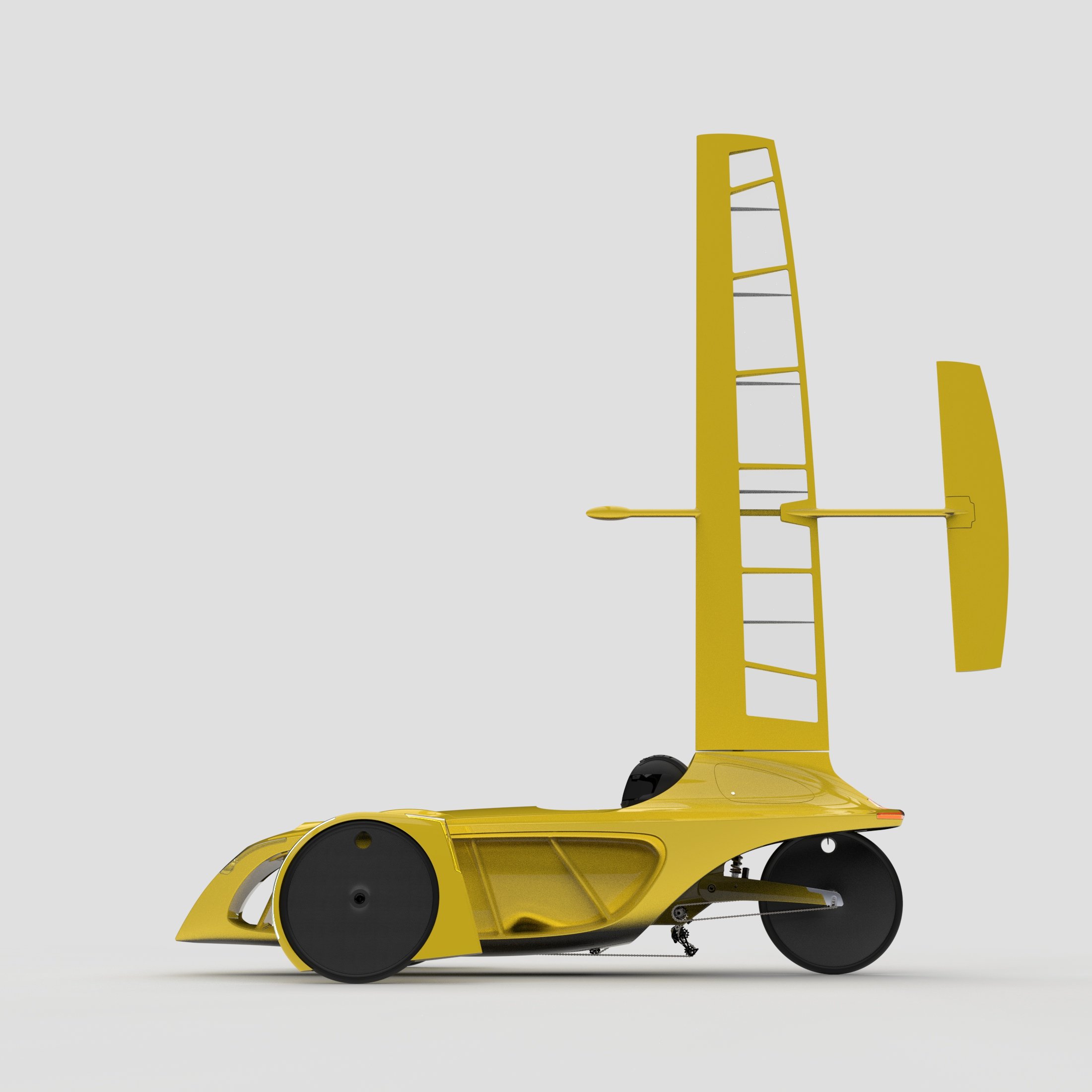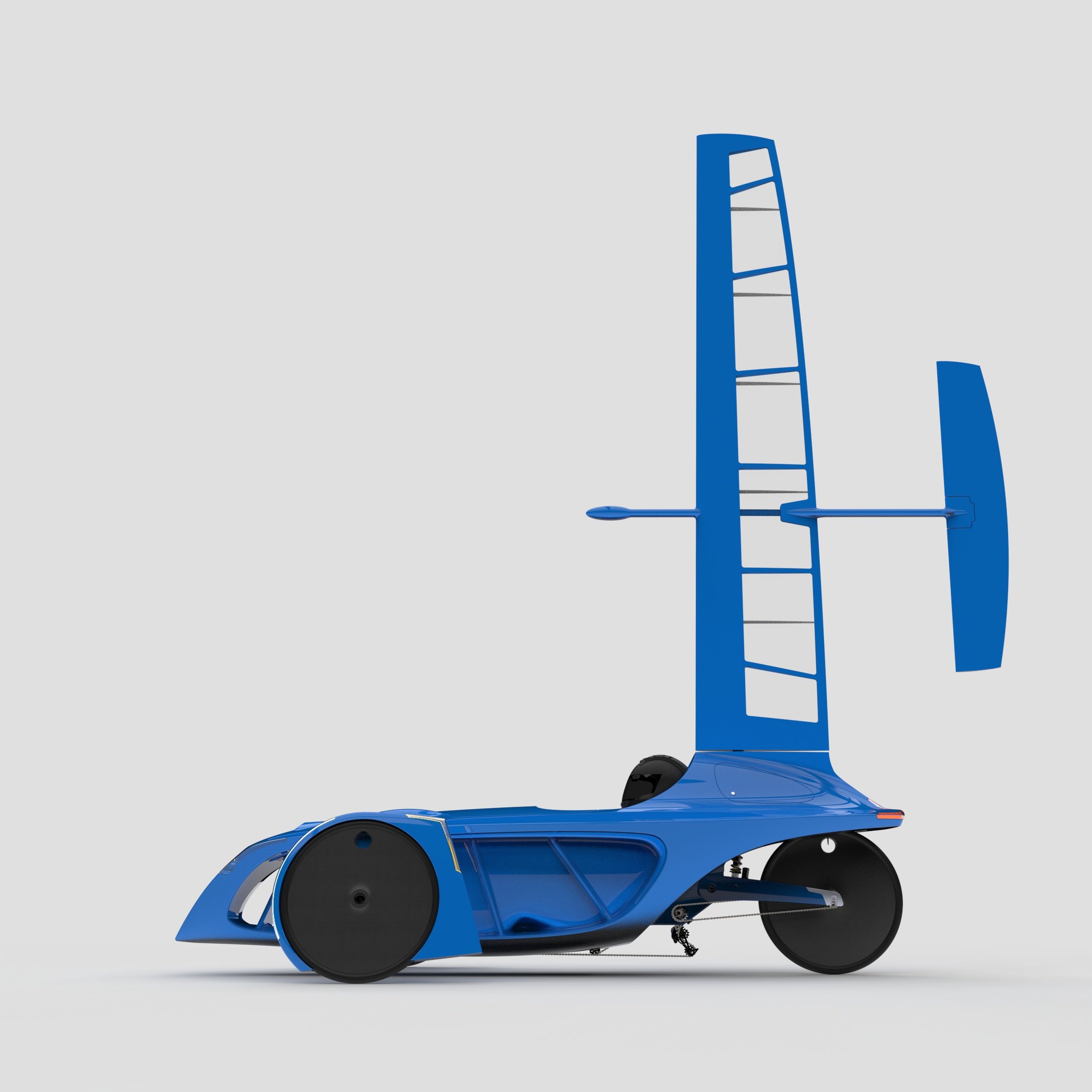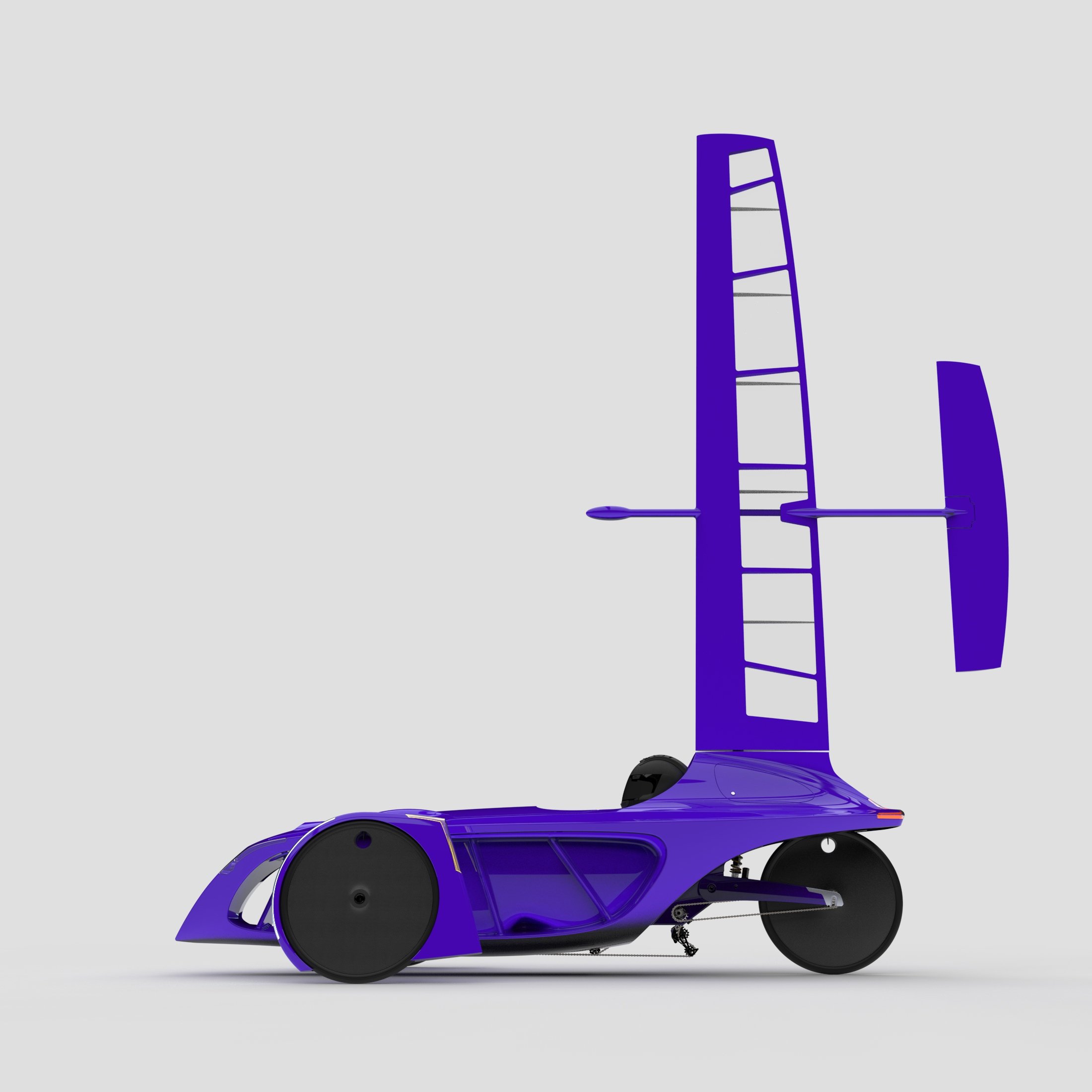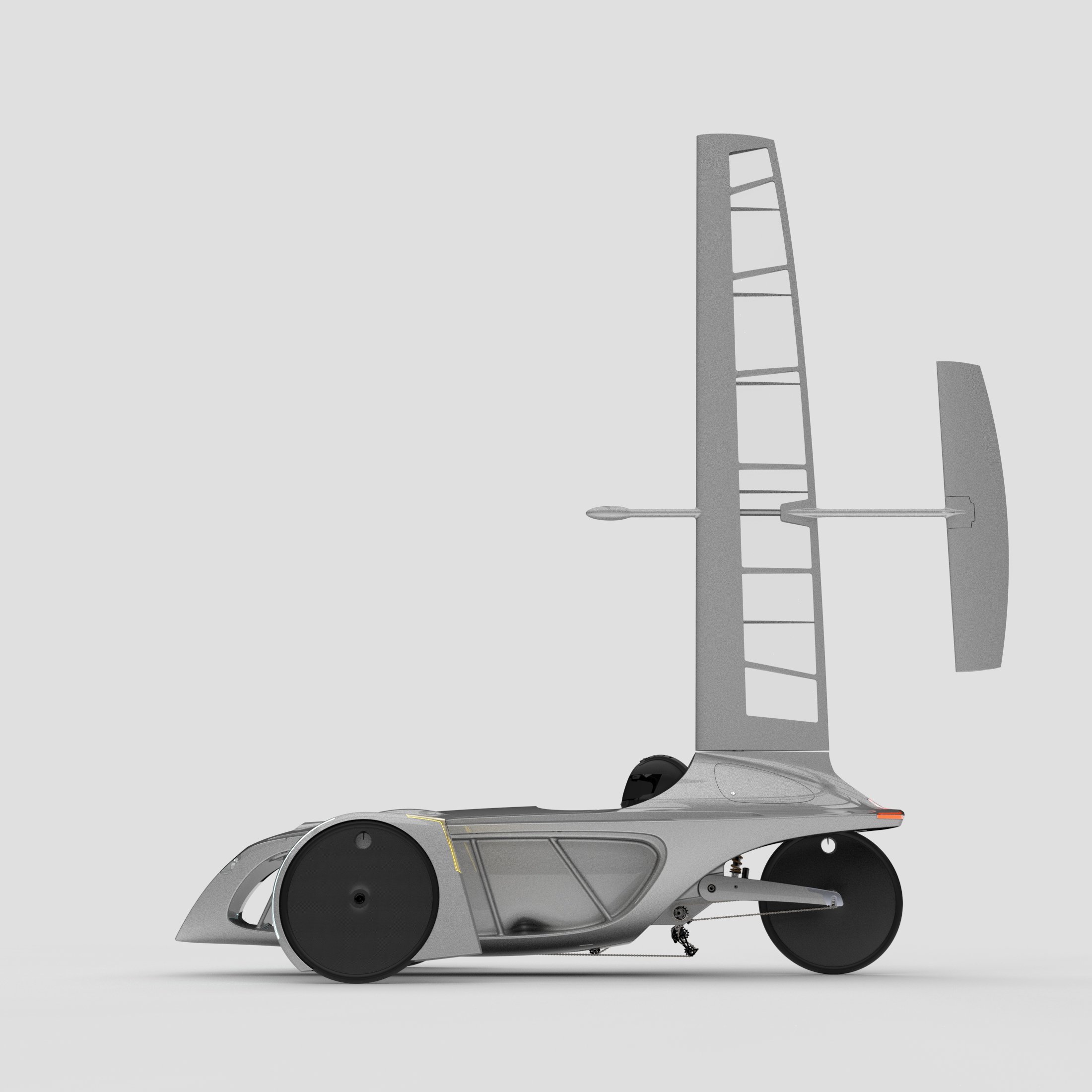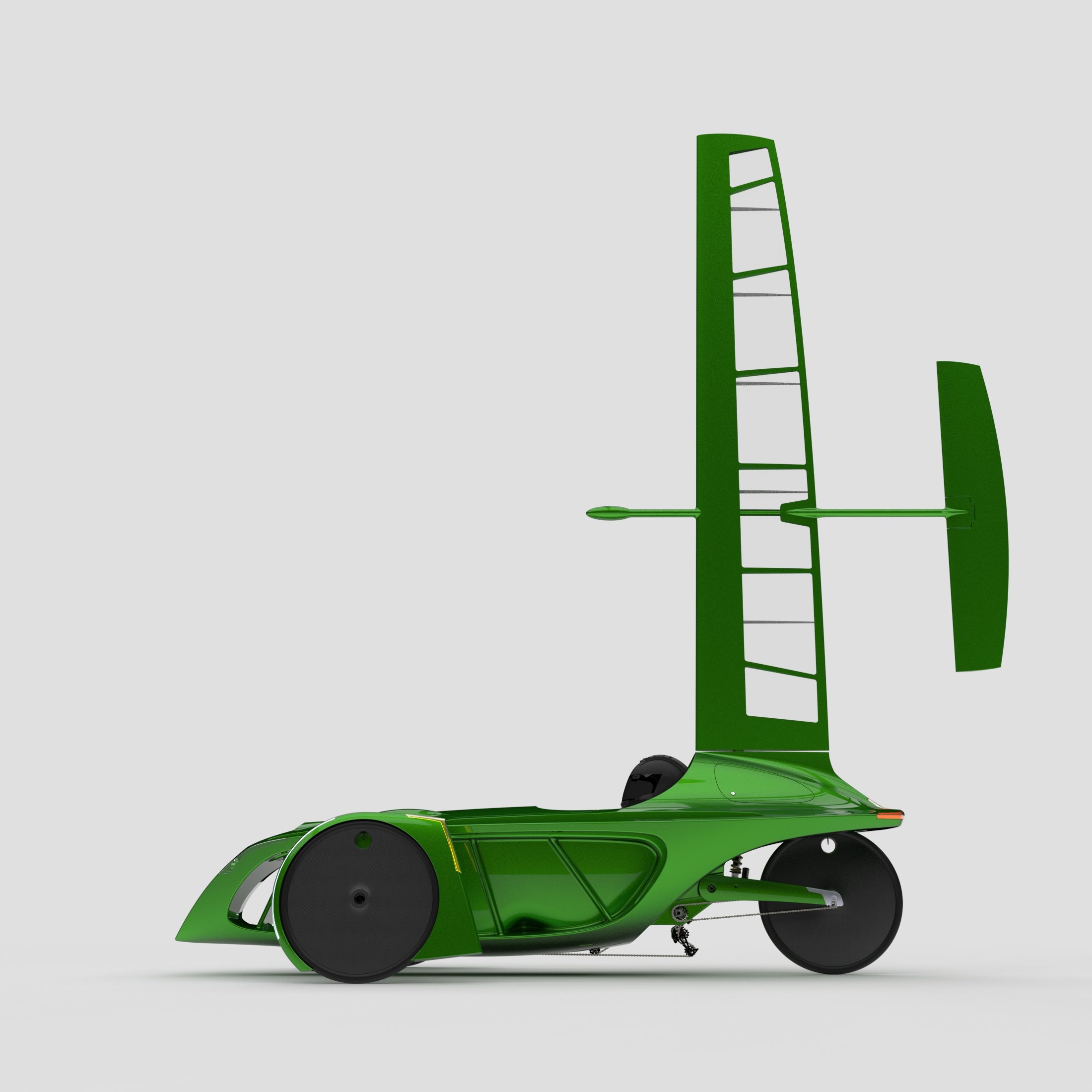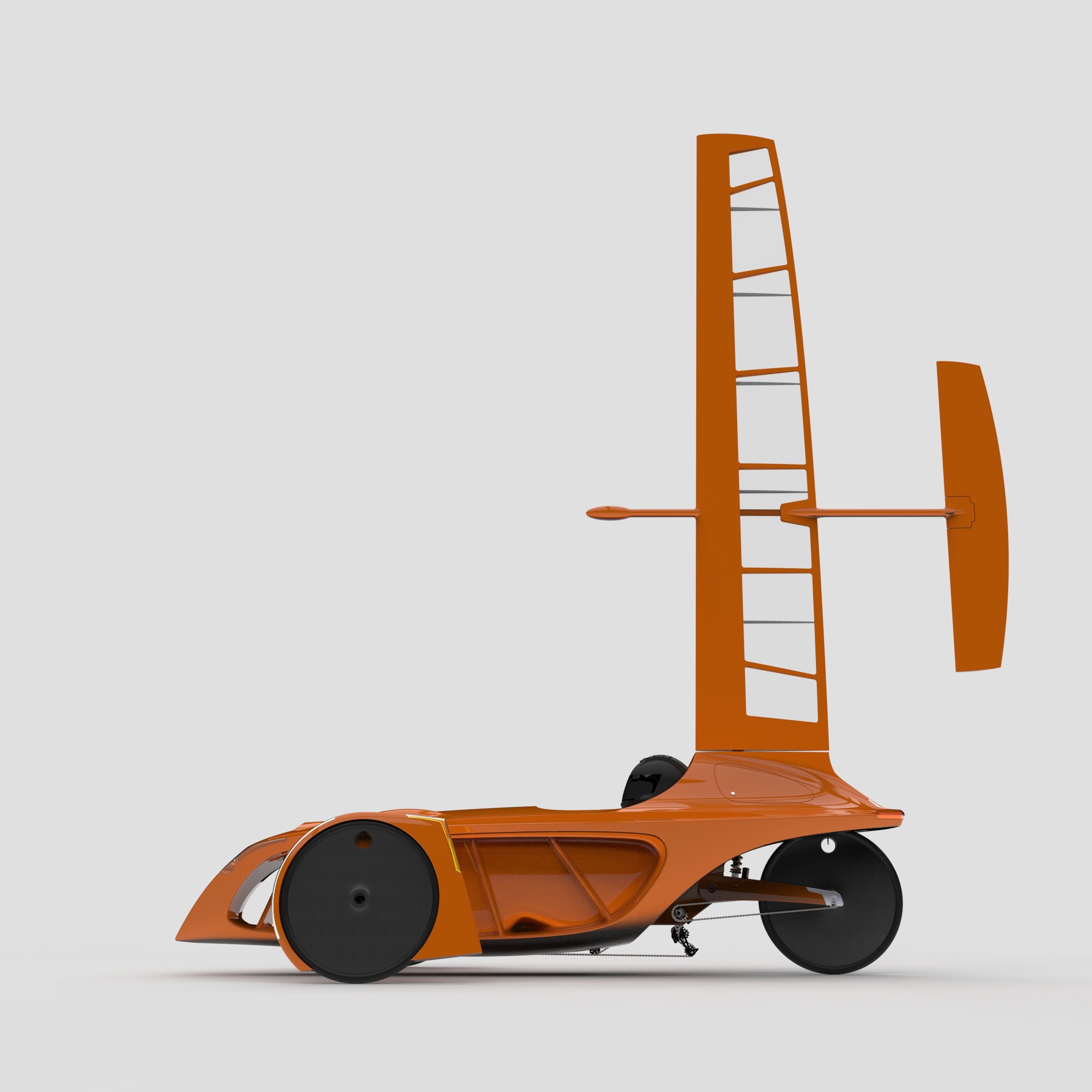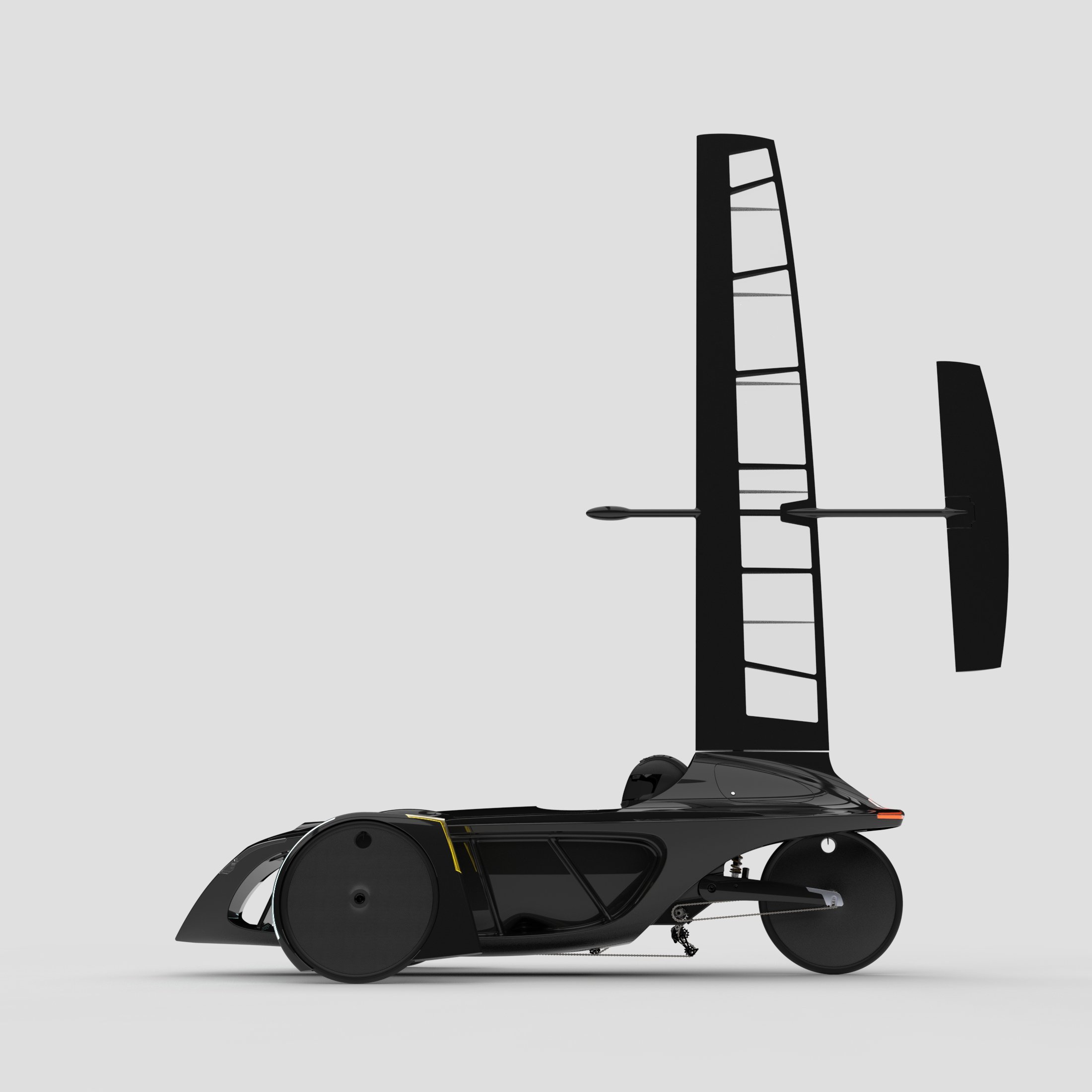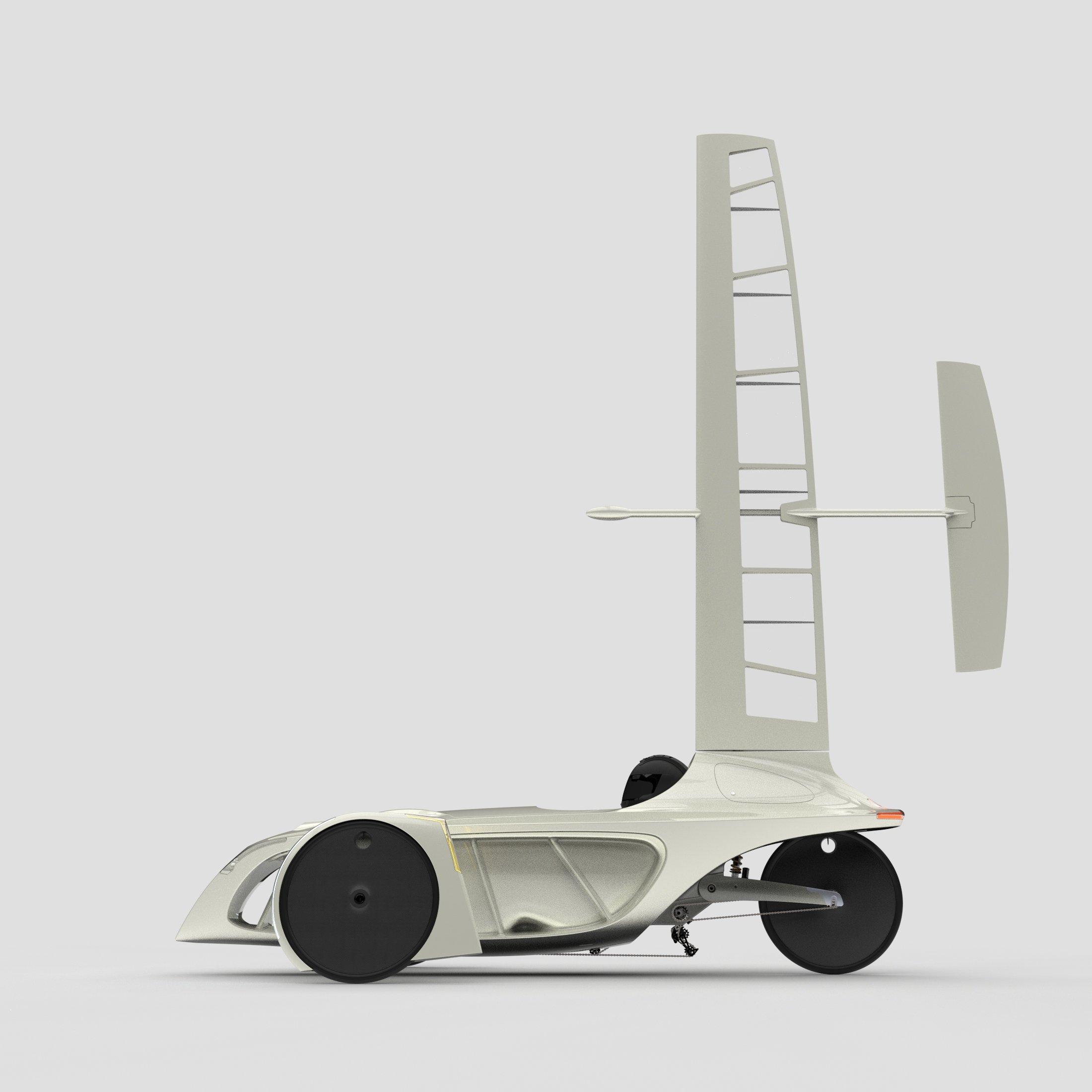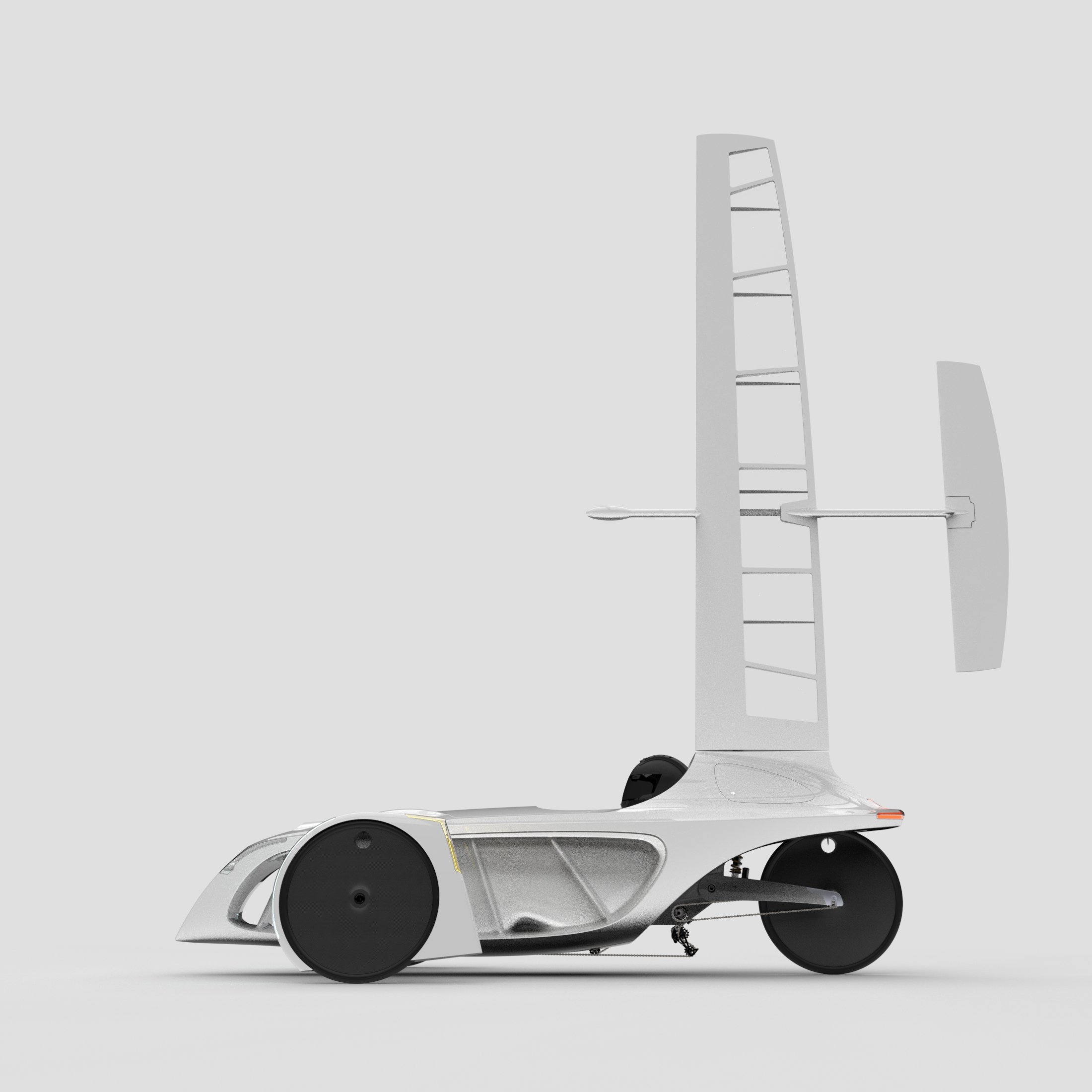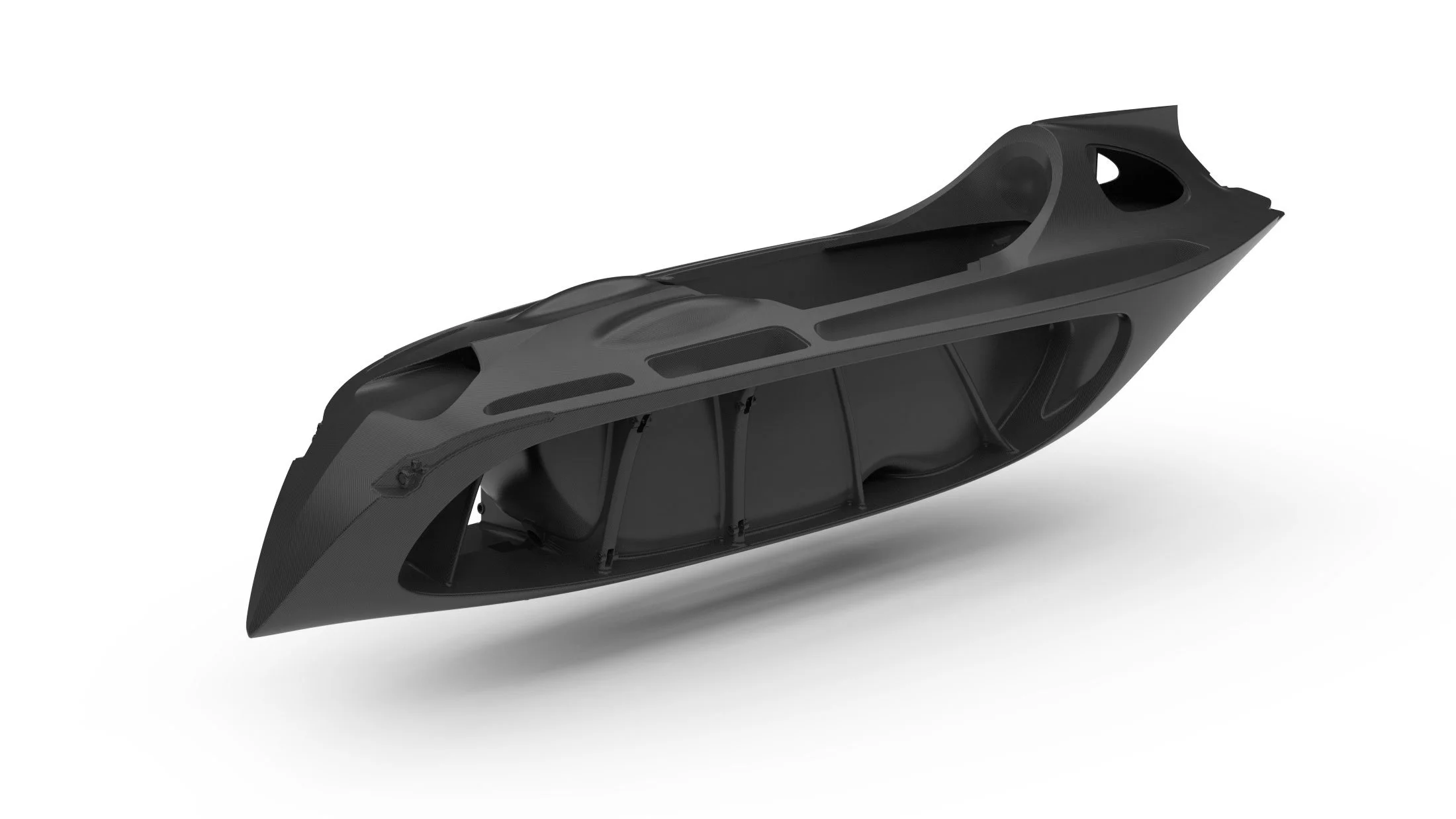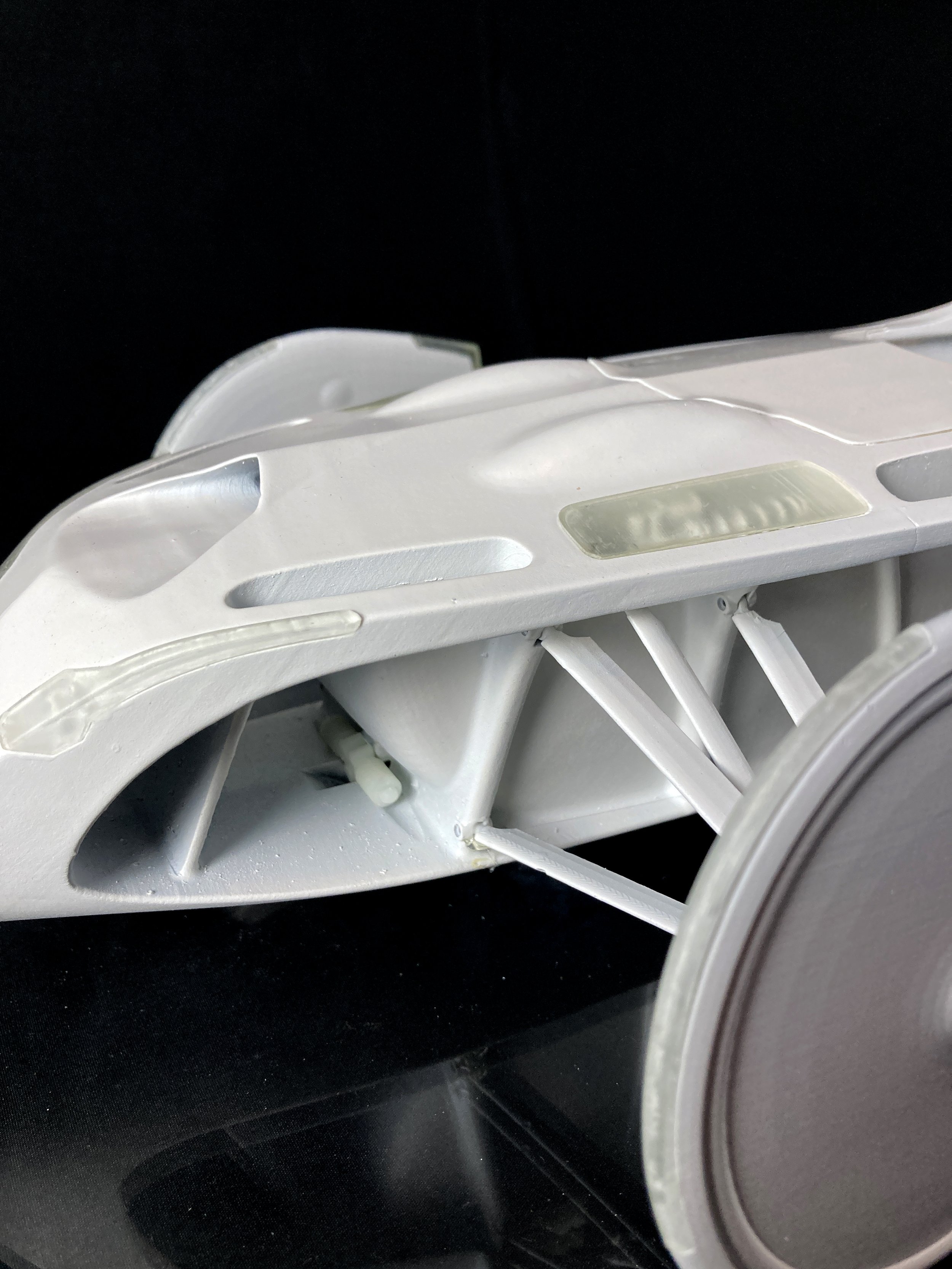Sustainable Mobility in a Post Climate Change World
Global climate change is upon us; our survival as a species will depend on our abilities to anticipate and adapt to it. There are a lot of misconceptions about the effects of climate change, but one thing we can all agree on is that weather patterns are becoming more erratic and weather events more severe. Even if you don’t live in an area prone to hurricanes, wildfires or drought, you’re still likely to have noticed the large temperature swings experienced throughout the US and abroad. One of the most noticeable side effects is wind.
A 2019 study indicates that “in the preceding nine years the global average wind speed increased nearly 6 percent.” (SA) Increased wind is a major challenge, but it also comes with a few benefits including a “17% increase in potential wind energy” (SA) and a narrow opportunity to democratize and reduce the environmental impact of transportation.
As we approach 10B people, neither the planet nor most of the people on it will be able to afford a fossil-fuel powered car. But with the advent of the self-tacking wing sail, wind can now be harnessed directly to assist inter- and intra-city transportation. Equipped with this simple and ingenious technology, this design turns an anticipated challenge of climate change into an opportunity to provide safe, low impact transportation that's affordable to all.
“In less than a decade, the global average wind speed has increased from about 7 mph to about 7.4 mph. For the average wind turbine, that translates to a 17% increase in potential wind energy.”
With their enormous contributions to climate change, nowhere is adaptation more important than in the areas of human transportation and health. What follows is a proposal for a new kind of transportation — a human/wind hybrid vehicle that uses simple mechanical systems and lightweight design to make transportation safe, sustainable, healthy and affordable.
Transportation
Automotive “transportation accounted for the largest portion (29%) of total U.S. GHG emissions in 2019,” with light duty vehicles (i.e. cars) contributing over half that number. Potentially powered by renewable energy, electric vehicles are a major step in the right direction, but they come with enormous technological and infrastructural complexity. There is only one propulsion technology that generates no GHG emissions during use and actually benefits from the effects described above — sail technology.
Health
Poor diet and exercise habits have caused an explosion in obesity and related illnesses that detrimentally affect human happiness, economic prosperity and global climate change. Automobiles contribute to our poor health by making it possible to live in distant exurbs and commute longer distances, leaving less time for exercise, cooking, and family. Meanwhile, cycling provides a healthy, accessible form of exercise and transportation and is one of the most efficient and low impact means of transportation ever devised.
Propulsion
This project leverages increased wind to provide an affordable and healthy alternative to motorized mobility. It marries self-tacking wing sail technology (e.g. Saildrone, et al.) to an aerodynamic human-powered velomobile.
Wind Power
Apparent wind is the wind you feel when you’re in motion. It is the combination of the wind that’s blowing in the environment around you and that which you are generating my moving forward. The use of apparent wind is what allows ice boats and AC yachts to sail at several times the speed of the true wind.
This isn’t the first bicycle to include wind power as a means of assistive propulsion. Other vehicles such as Pterosail and Whike also come sail-equipped, but to use them the rider must manage both a bicycle and a sail at the same time. By contrast, this design uses a high aspect ratio, self-tacking rigid wingsail. This means that the sail will automatically adjust to capture the wind with little or no attention from the rider. The rider doesn’t even need to know how to sail; he simply rides where he wants to go and gets a boost when the combination of wind speed and direction allow. Like an ice boat or a modern America’s Cup yacht, this high performance sail uses apparent wind to propel it at more than 5X the "true" wind speed. Check out this video for an illustrated explanation of how iceboats and modern foiling yachts sail many times faster than the wind.
Human Power
Like other velomobiles, this device makes it easier to meet daily recommendations for exercise by turning every commute into a workout, reducing the risk of obesity and heart disease and the associated costs — economic and psychological — of treating those diseases. “On a flat road, aerodynamic drag is by far the greatest barrier to a cyclist's speed, accounting for 70 to 90 percent of the resistance felt when pedaling.” Lightweight and aerodynamic, this faired low racer recumbent provides a fast, efficient means of translating human effort into intracity speed by reducing the energy-sapping effects of wind resistance. (And because the sail is self-tacking, when a rider’s speed pushes the apparent wind directly in front of the rider, the sail will shift into a neutral position, becoming a high visibility, streamlined aerofoil.)
The body pictured below is already more aerodynamic than the average upright cyclist, but it is designed to be still more so when optionally skinned using heat shrink film. The same as that used for custom car wraps, this film is available in a wide range of colors and finishes. If used, it will provide a lightweight, streamlined exterior skin that will allow the vehicle to be offered in different colors using the same underlying form. It can even be digitally printed to turn the vehicle into a rolling art piece or advertisement.
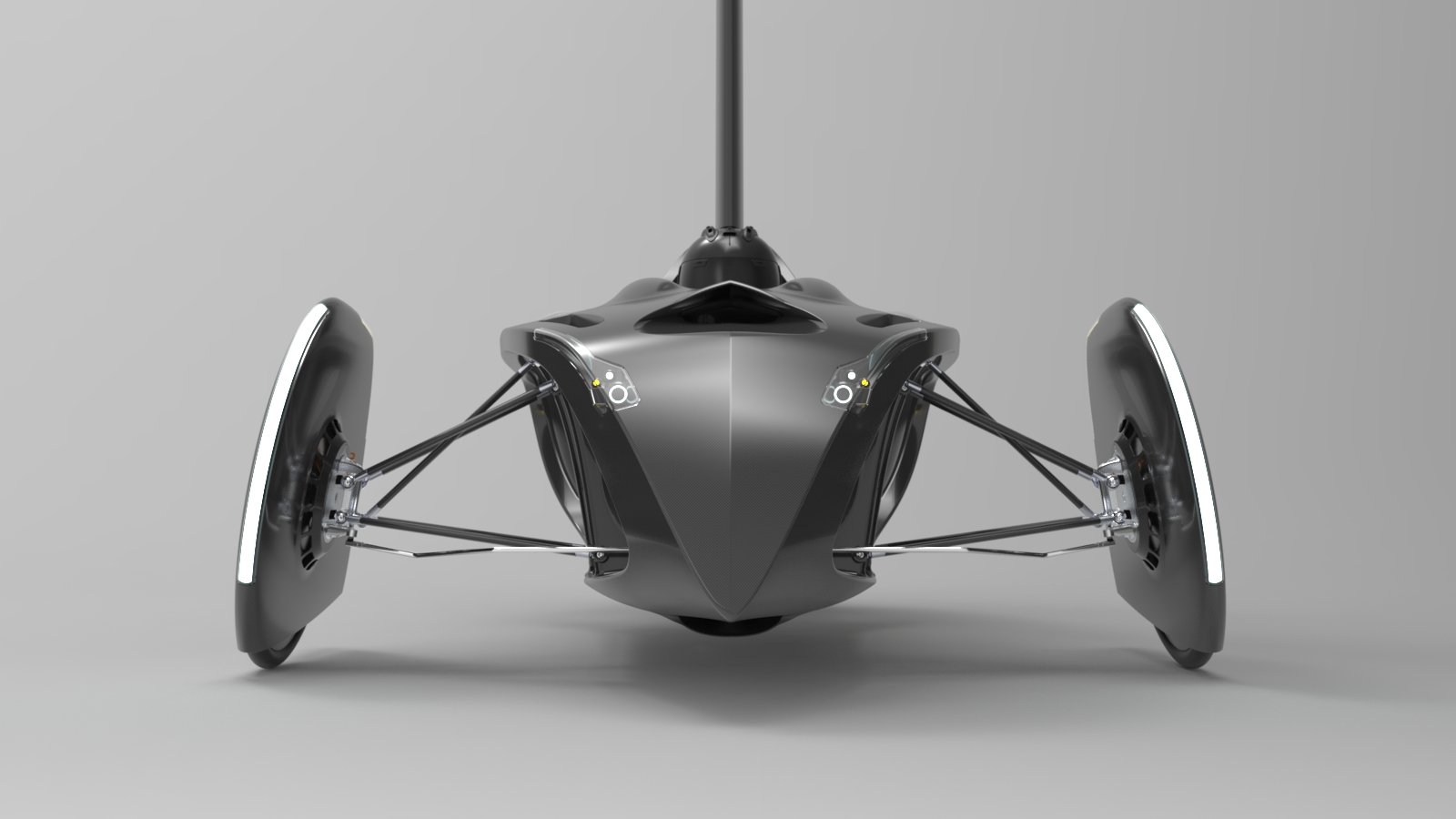
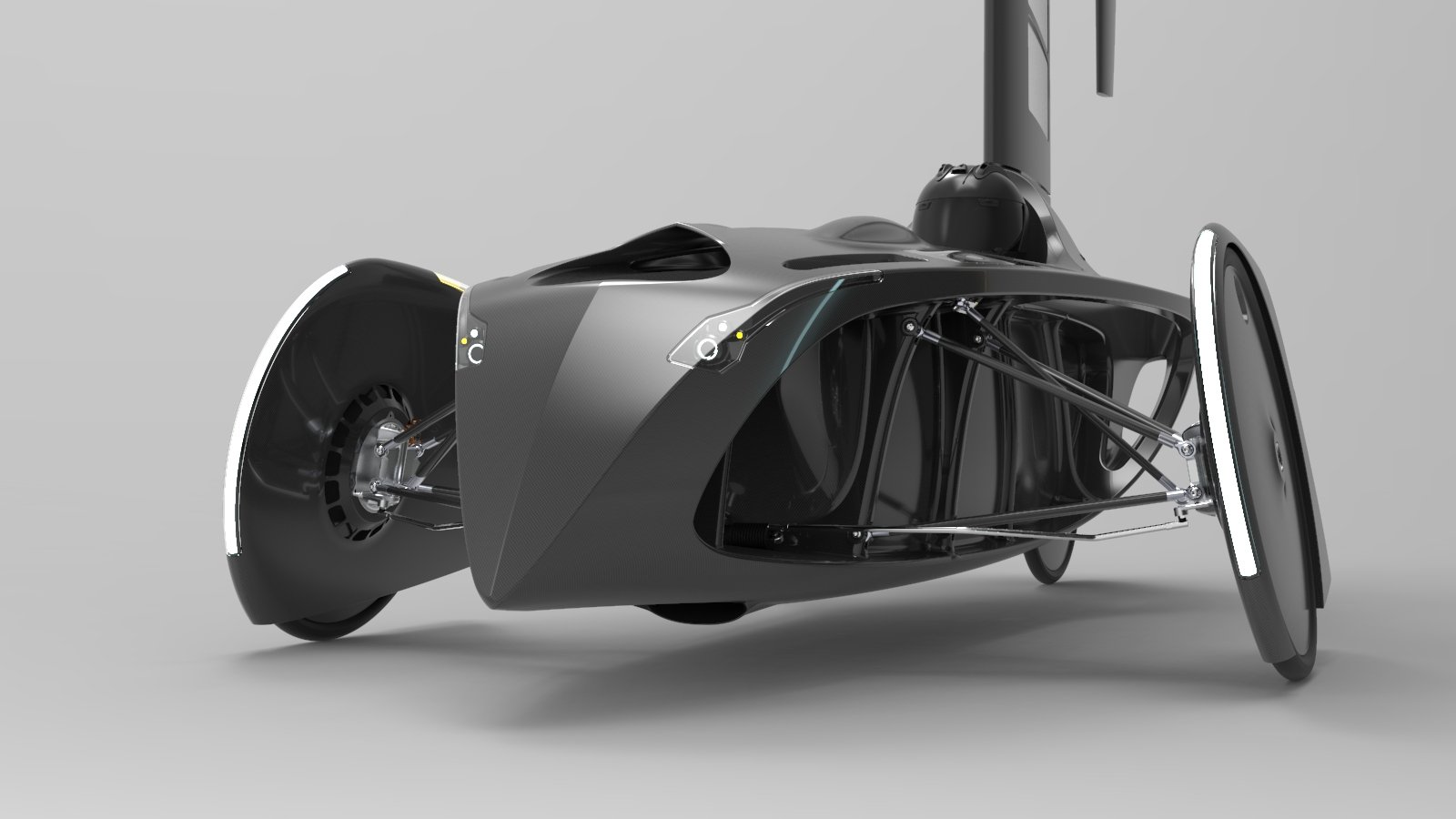

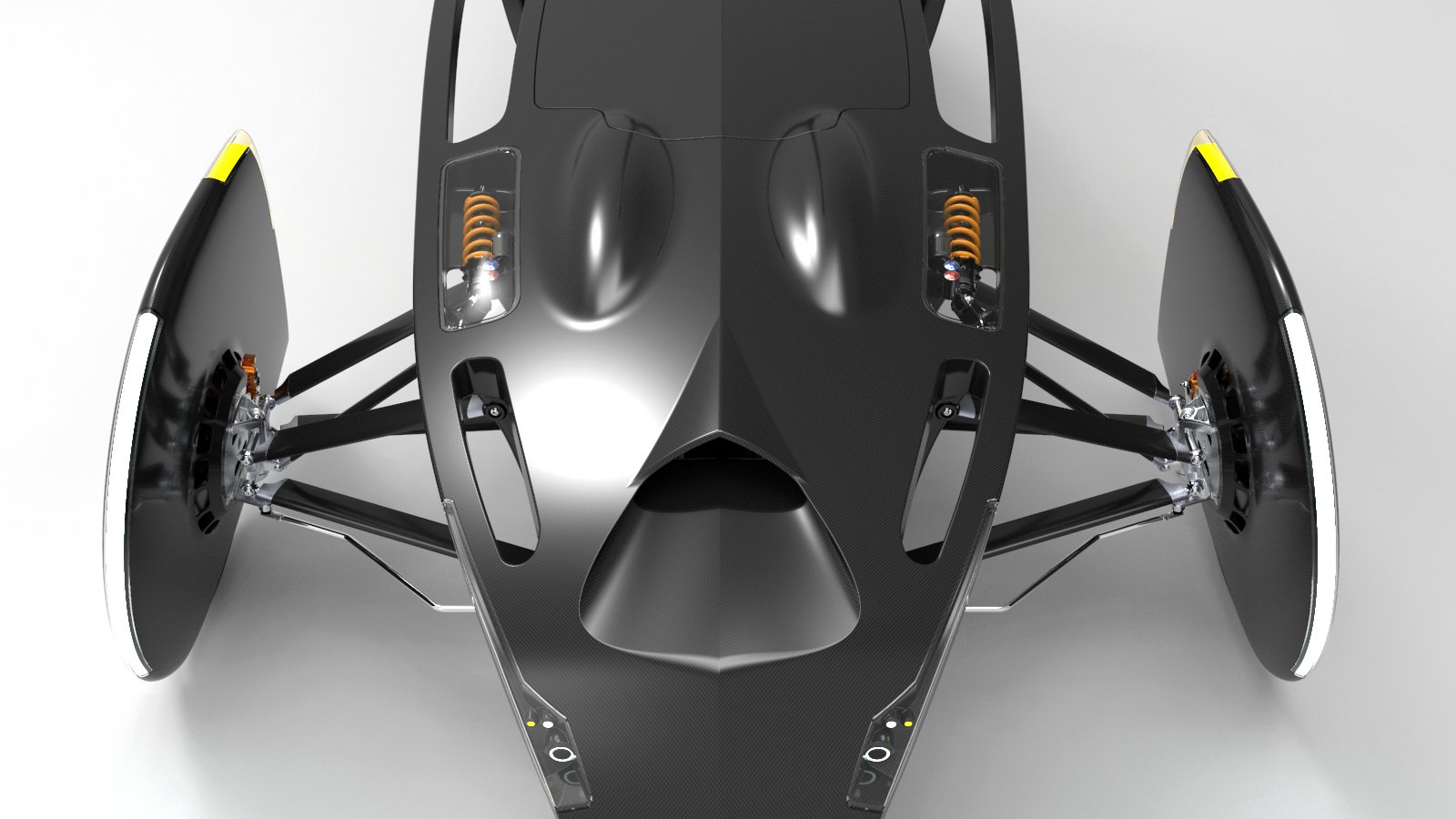
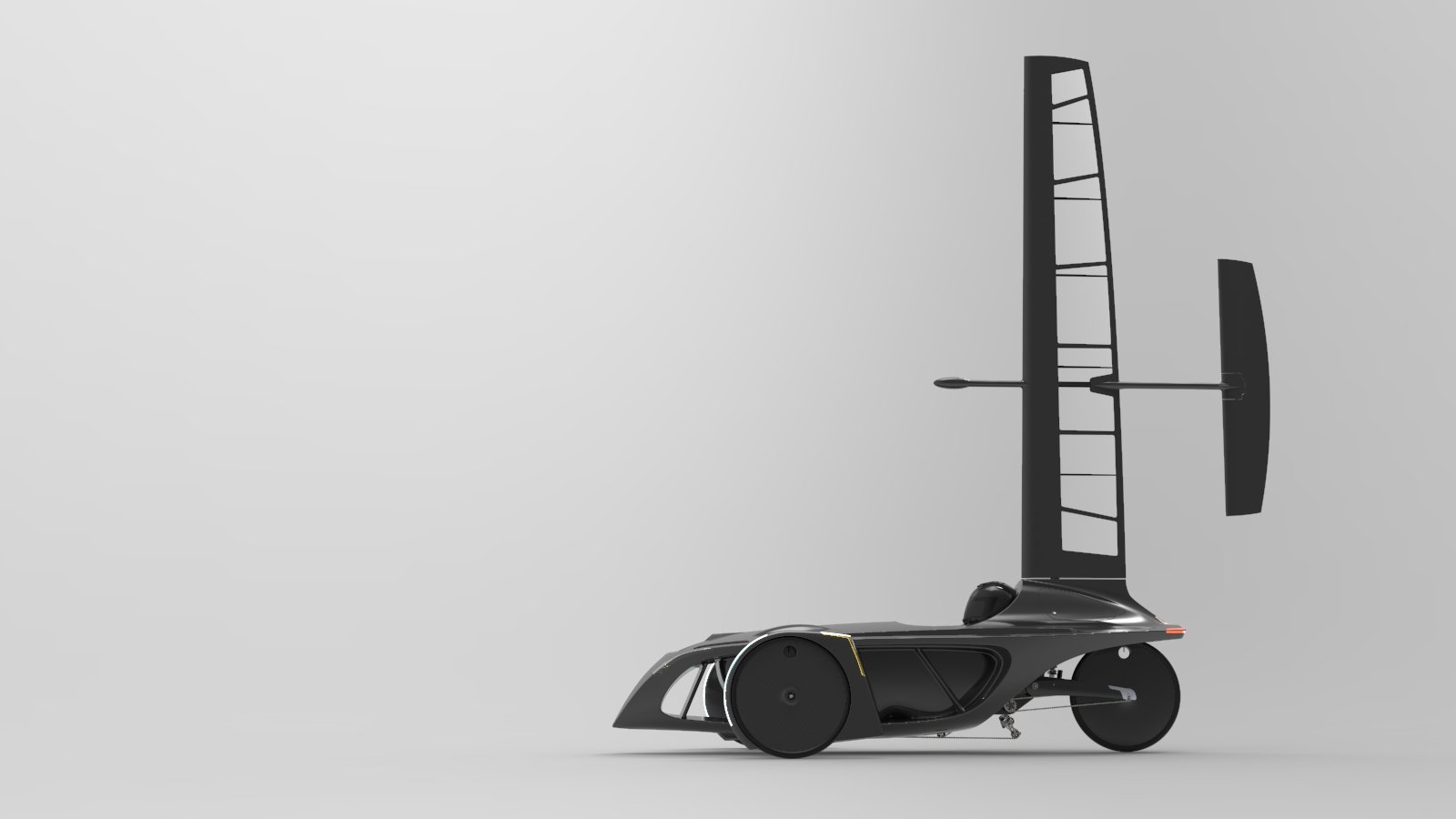
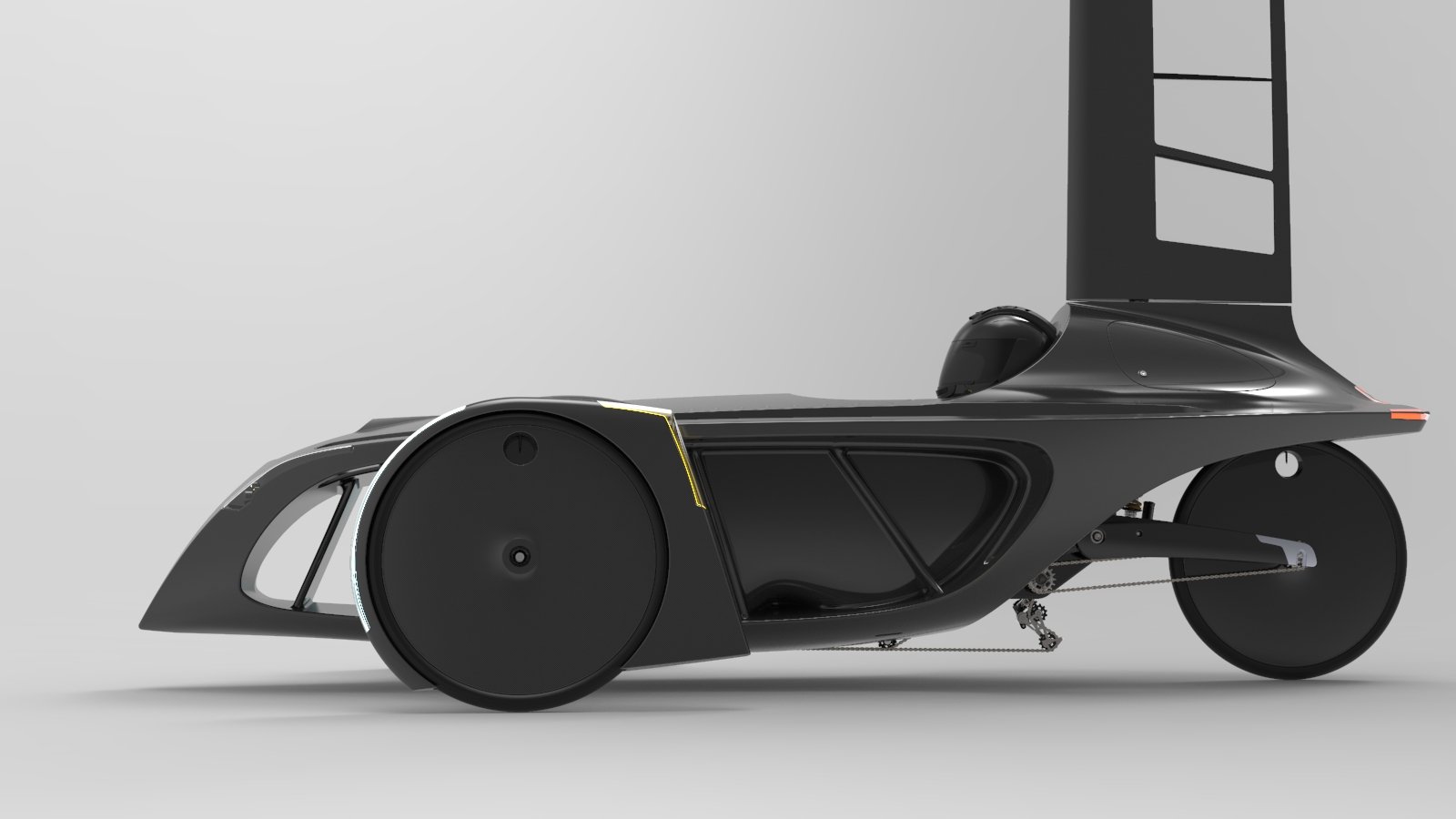
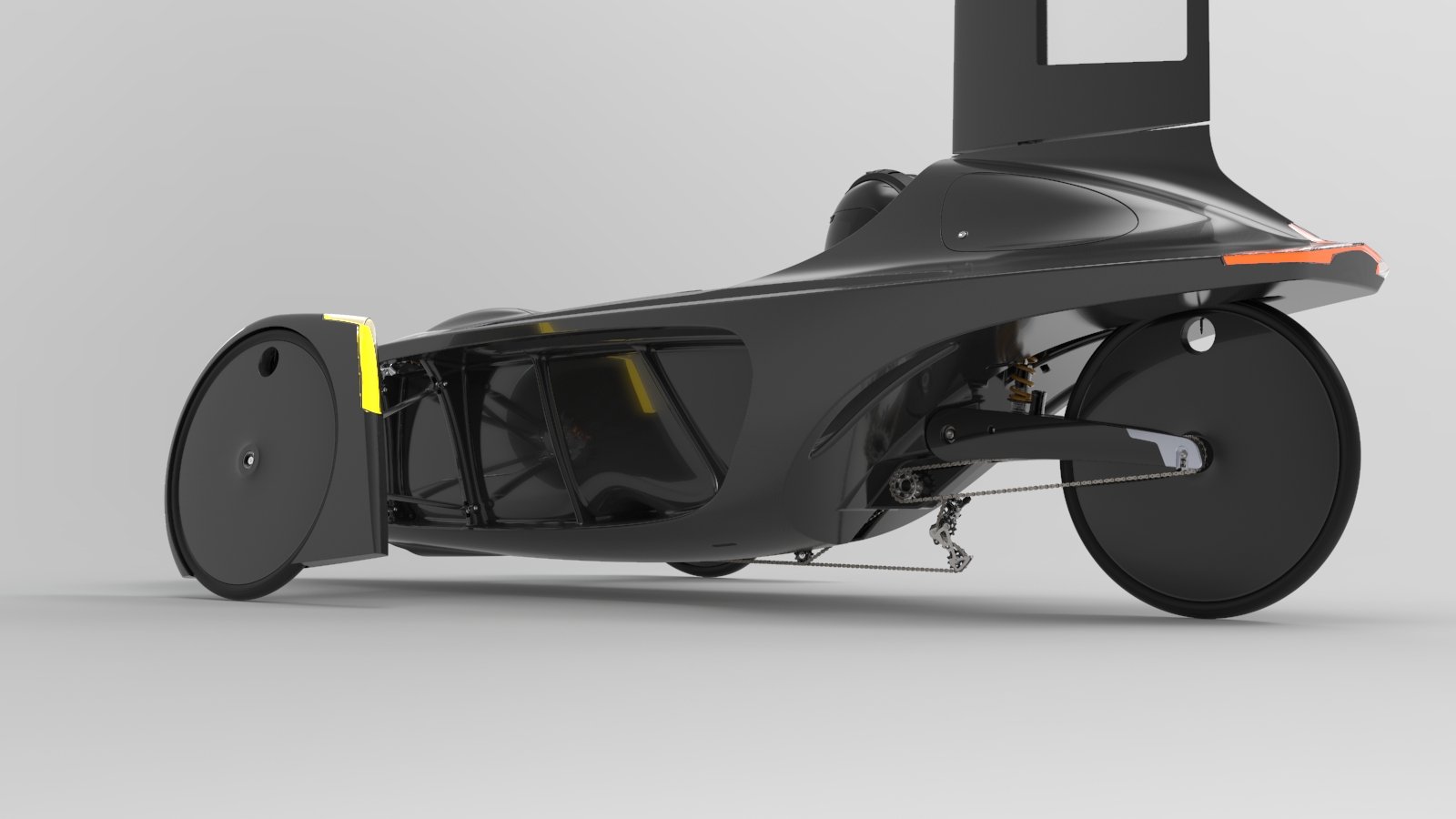
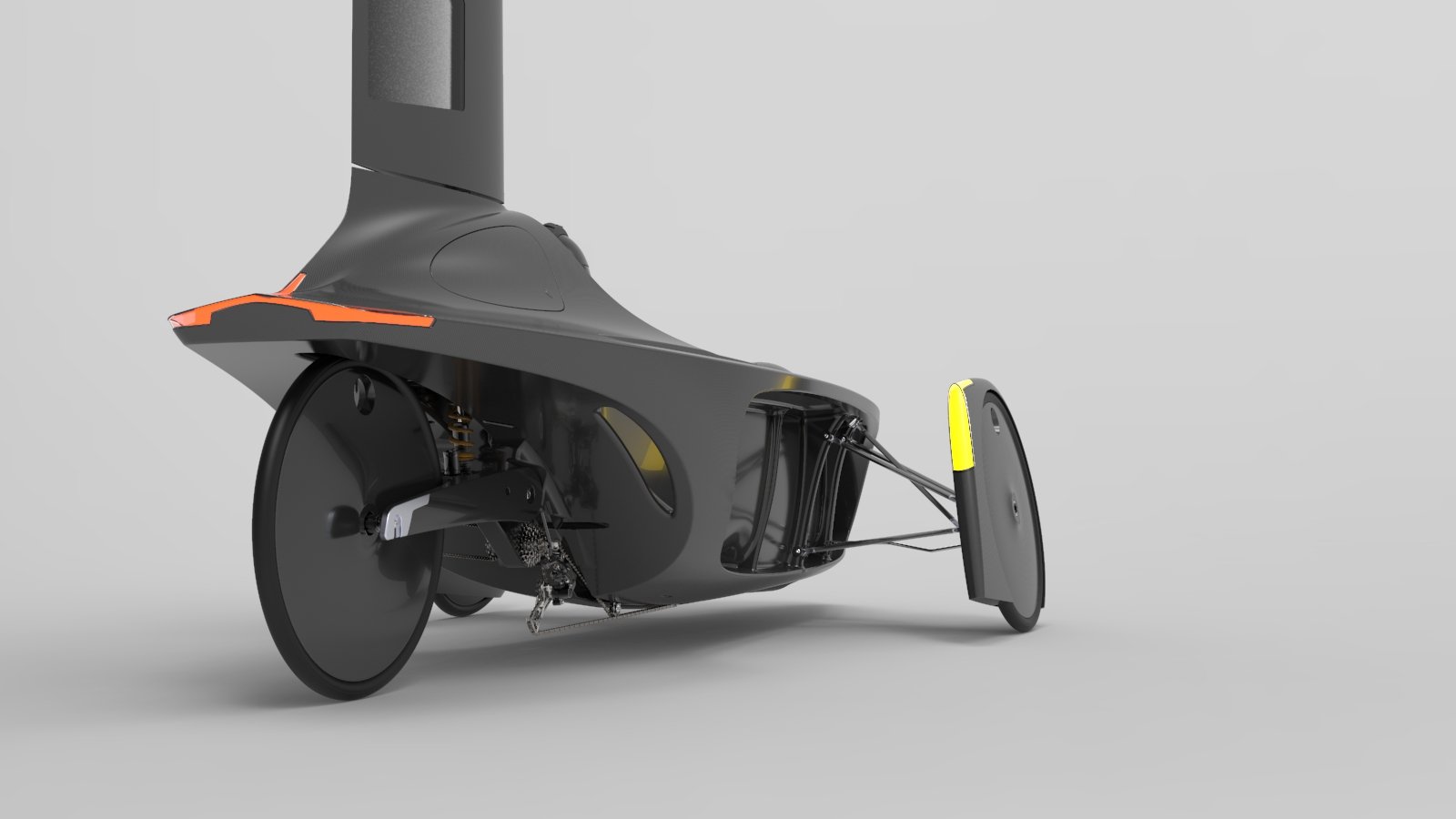
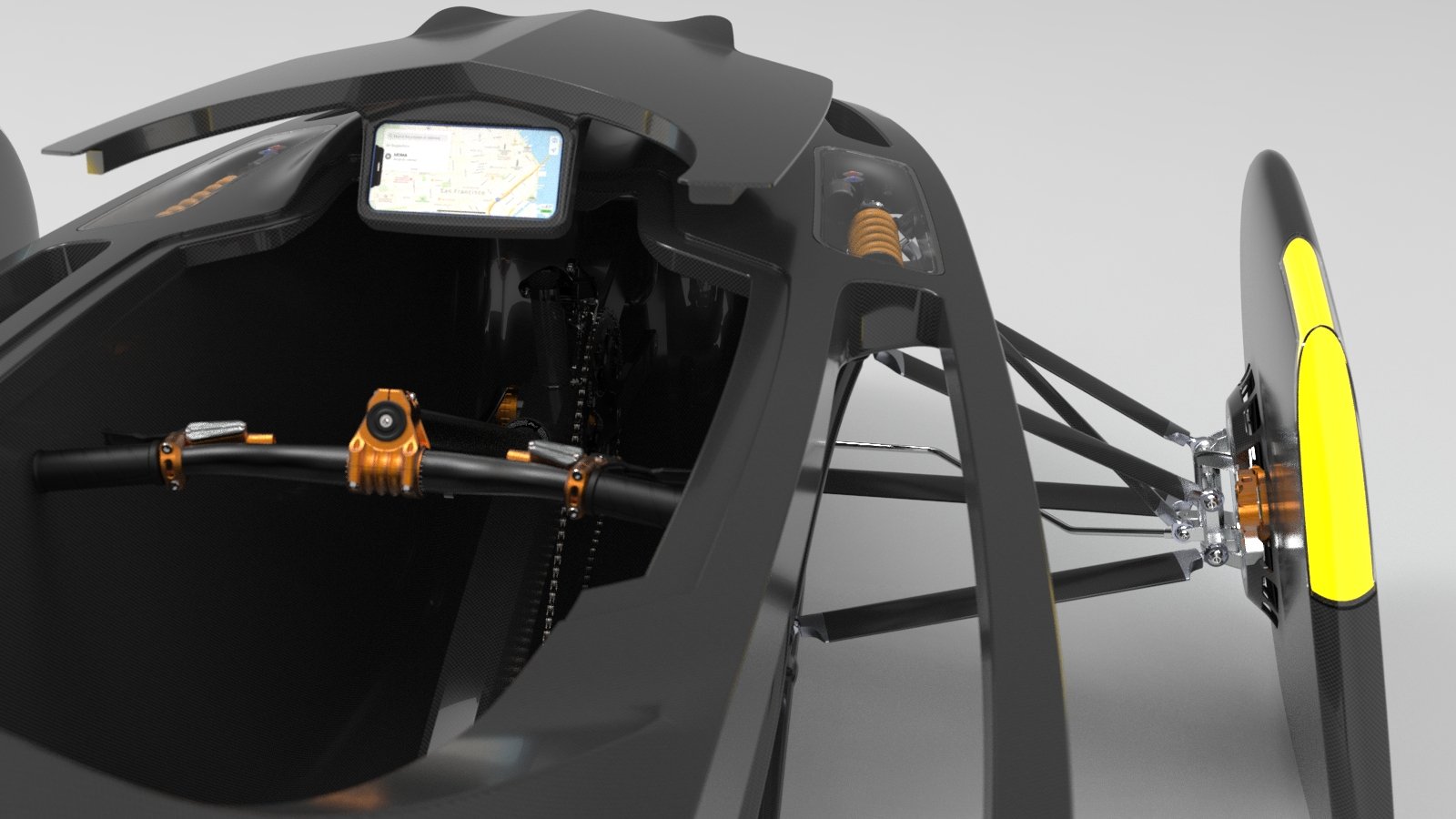
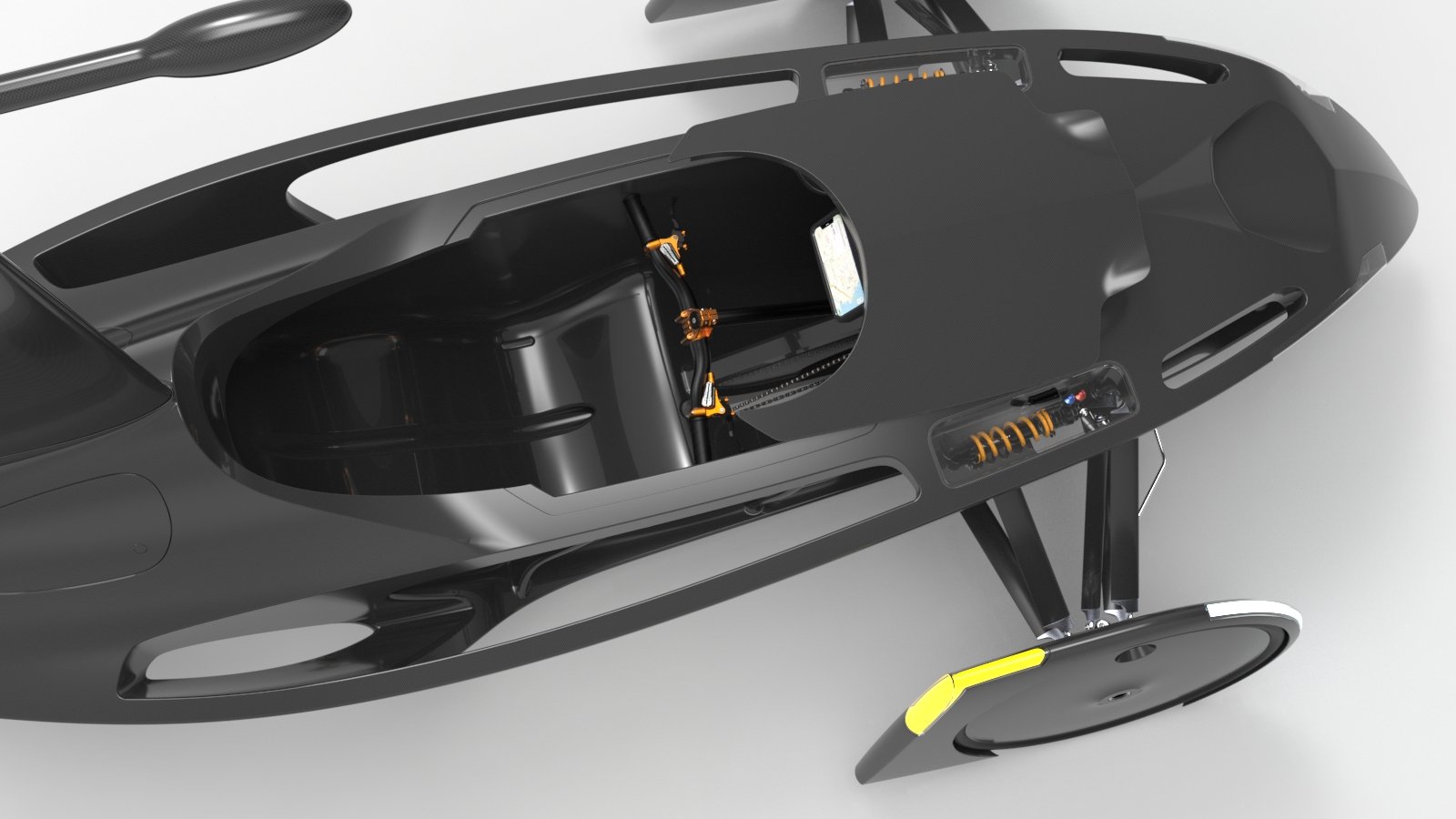
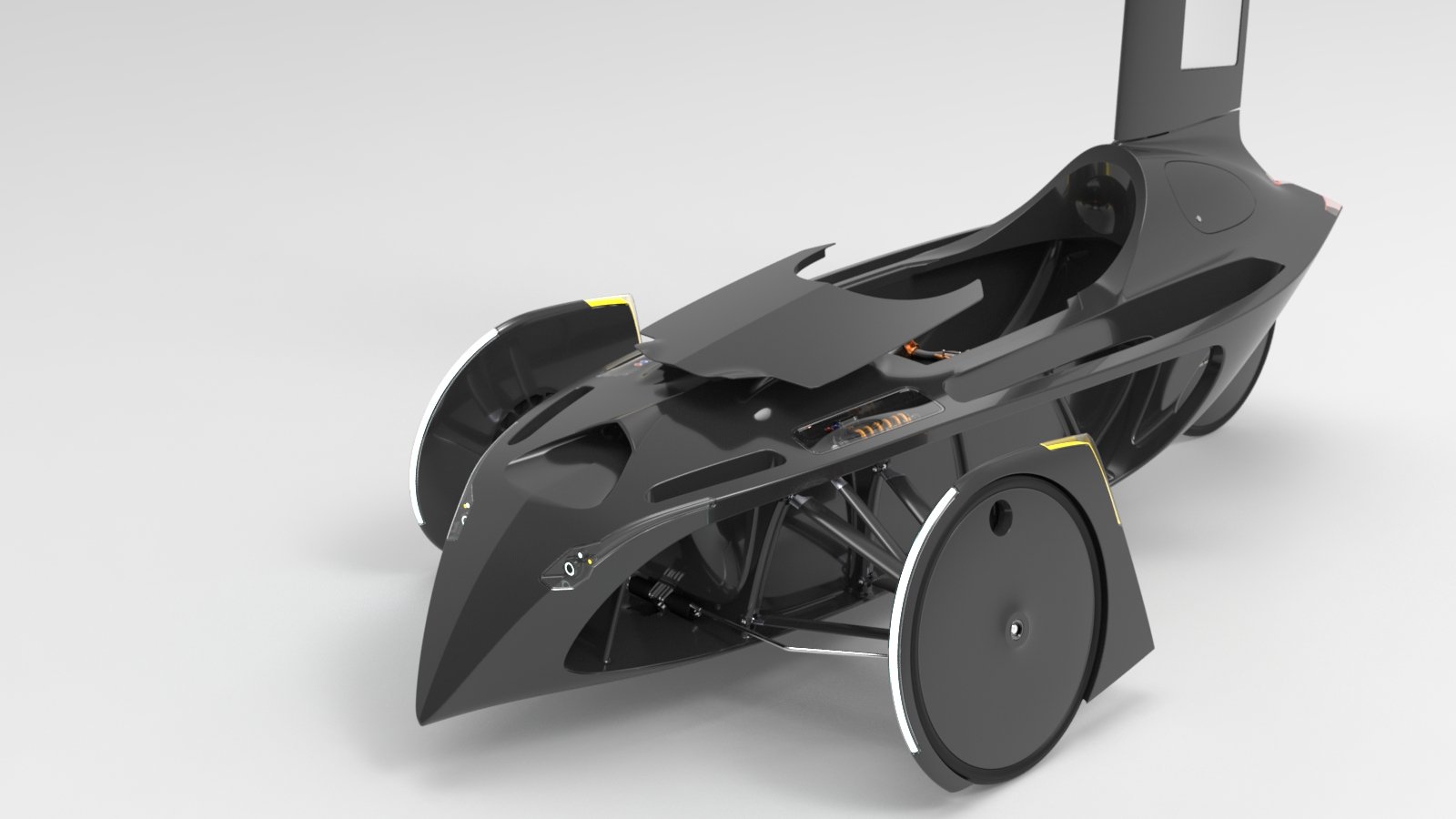


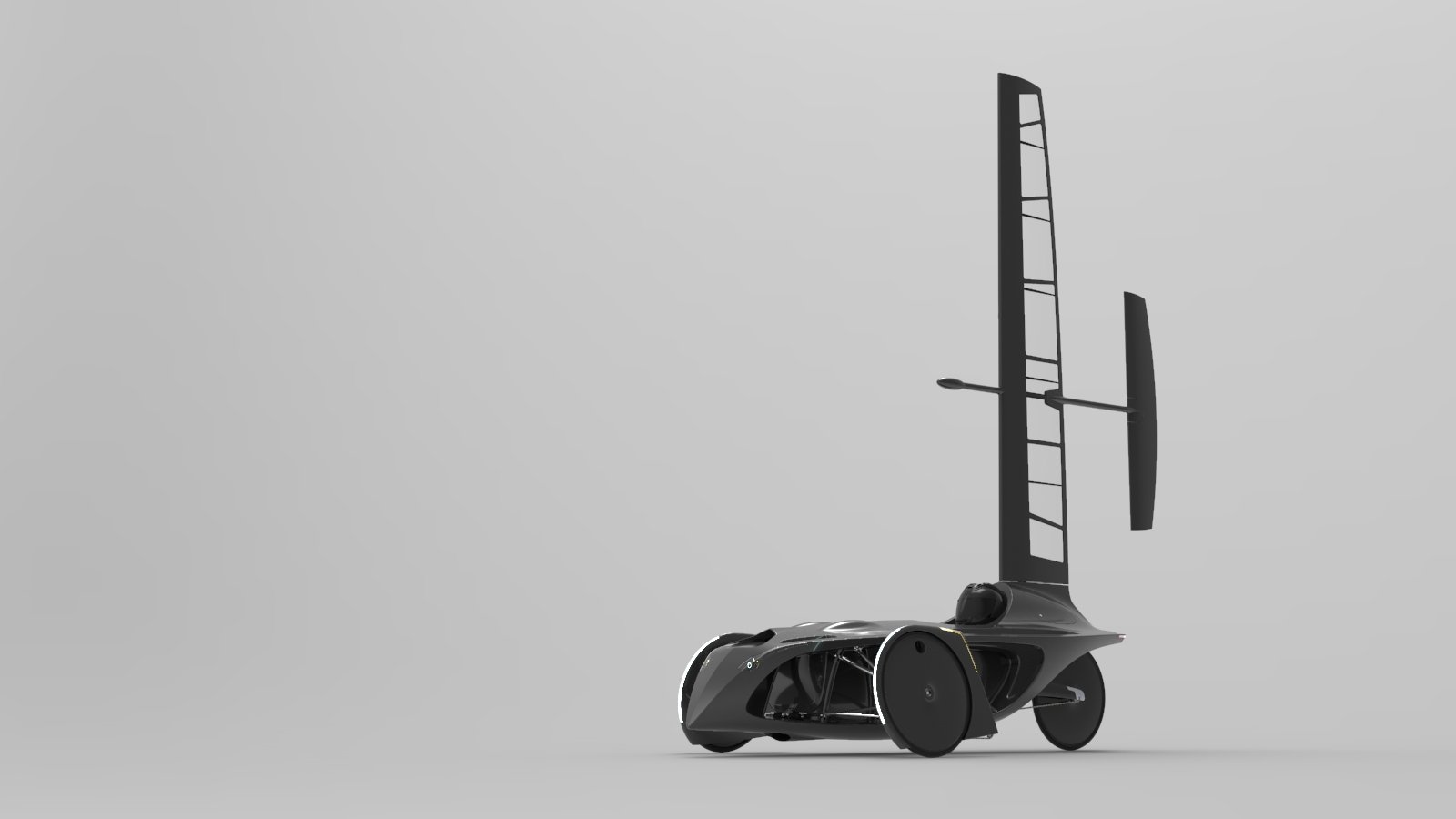
The composite monocoque comprises the vehicle’s body, seating and survival cell in a single unit. The shape of the rider, including his seat and pedaling circle, is visible behind the structural ribs on the side of vehicle to highlight the human-powered engine within.
Safety
One of the major advantages of recumbent bikes is their aerodynamics. Nearly 80% of the energy an upright cyclist expends during a ride is used to overcome her aerodynamic drag. Faired or naked, the most efficient recumbent bikes are lowracers. These bikes that put their riders just inches from the ground — at about eye level with the hubcaps of most automobiles. Despite the many advantages of recumbent bicycles, the lack of safety associated with this low position is one of the major barriers to their adoption. The challenge of developing a road-safe recumbent bike lies in maintaining its aerodynamic advantage while overcoming the lack of visibility and protection this low-to-the-ground position requires.
Impact Protection
To protect the occupant during a collision, this design incorporates an F1-like monocoque survival cell. The monocoque body is 3D printed with a low density infill and later skinned with a wet layup of carbon fiber. Advances in computational analysis, topology optimization and slicing software allow the monocoque’s core to be printed with variable infill densities throughout. This provides energy absorption where it's needed and light weight where it's not. The solid carbon shell directly surrounding the rider provides a cocoon of protection while the surrounding structure, including wheels and suspension components, act as crumple zones. The main energy-absorbing features are 27” from the ground — the bumper height of an average SUV.
Visibility
While the monocoque survival cell is designed to protect its occupant during a collision, the visibility provided by the large wing sail is meant to prevent one. Vehicles that sit below the belt line of large SUVs are essentially invisible to their drivers — particularly on the passenger side. At 13’ 6” the large wing sail on this vehicle makes it impossible to miss. Skinned with heat shrink film, the sail also provides billboard area for advertising and the option to be illuminated in strategic locations and from within.
The major risk for recumbent riders is a collision with a motor vehicle. In the US, accidents due to poor visibility are already common for cyclists on upright bicycles; recumbents by their nature are lower and far less visible. With its high aspect ratio wing sail, this vehicle provides visibility that exceeds that of many cars.
Democratizing Transportation
Human happiness and prosperity depends on clean air, health and transportation independence. But our singleminded focus on motorized transportation has made transportation independence a luxury only the relatively wealthy can afford. Unlike motorized vehicles, this device enhances the quality of life of its user by making her more healthy every time she uses it. And it does so with little or no environmental impact. Because it uses free human and wind energy, this vehicle causes zero air pollution during use, keeping neighborhoods free of airborne pollution and reducing the need for neighborhood gas stations. And because it uses low tech mechanical systems without the cost (and weight) of motorization, it will be affordable to and serviceable by a greater number of owners.
This design takes advantage of additive manufacturing’s potential to reduce eco impact and empower local entrepreneurs. If 3D -printed with low impact and biodegradable PLA infill and skinned with biocomposites such as flax fiber and biopoxy, the entire body could be manufactured locally and disposed of sustainably. 3D printing also reduces the shipping size of the vehicle by allowing only its bicycle and suspension components to be shipped. Equipped with a large format 3D printer (e.g. Modix, et al), the receiving manufacturer could customize and print the monocoque on-site. This method would provide a flexible, networked alternative to our traditionally centralized method of manufacturing and distribution — a method the disruptions of COVID-19 has proven to be extremely fragile.
1/8 Scale Model
The images below are of a 1/8 scale model of the vehicle. The closeups show some of the details that aren’t well captured in the renderings, including: slots for a 4 point harness and dual cooling vents (one at chest level; one beneath the rider to channel air behind his/her back).
Project Update
In early 2023, the project was updated with a smaller, dual element and internally-illuminated wing. Though this improvement will add some electromechanical complexity, it will enhance upwind efficiency and visibility on the road.

